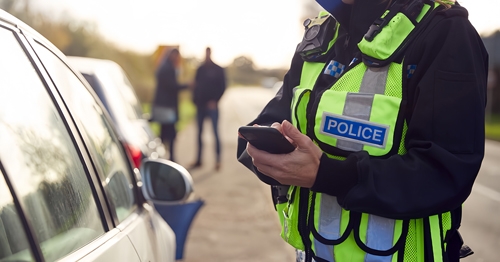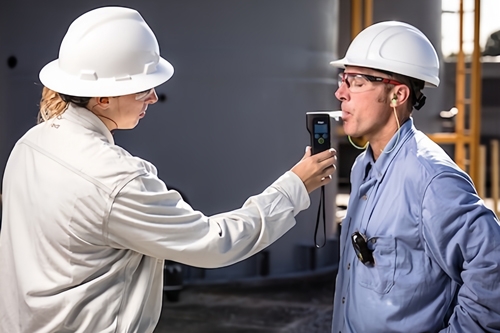Alcohol testers usually work by detecting the alcohol content in exhaled breath. When the person being tested exhales into the tester, the alcohol molecules in the exhaled breath react with the sensor. These reactions may be based on electrochemical principles, where alcohol undergoes a redox reaction with the oxidant on the electrode to produce a current signal proportional to the alcohol concentration; or based on wet chemistry, where the alcohol concentration is deduced from the color change of the solution caused by the reaction of alcohol with a specific reagent.
The advantage of an alcohol tester is that it can quickly and accurately determine the alcohol content in exhaled breath, which is particularly important for ensuring traffic safety. Alcohol testers usually have high sensitivity and stability. Thanks to advanced sensing technology and algorithms, they are small and easy to carry. This enables alcohol testers to maintain stable measurement performance under different environmental conditions, complete the determination of alcohol concentration in a short time (usually a few seconds to a few minutes), and provide test results. It is very suitable for occasions where rapid detection is required and has gradually become an indispensable tool for law enforcement agencies and traffic management departments, while also promoting the improvement of public safety awareness.

Factors Affecting the Accuracy of Breathalyzers
The reasons why alcohol testers are easily affected are mainly related to their working principle, sensitive sensor technology, and external environmental factors. Alcohol testers usually use chemical sensors, such as semiconductors, fuel cells, or infrared sensors, which are very sensitive to alcohol gas but may also be sensitive to other chemicals or environmental factors. Environmental factors, such as temperature and humidity, can significantly affect the accuracy of a breathalyzer. At lower temperatures, the reactivity of the sensor may decrease, resulting in a decrease in detection sensitivity and thus affecting the accuracy of the detection results. In addition, the physiological state of the subject is also a very important factor, because drinking time, eating habits, and individual differences may affect the measurement results of blood alcohol content.
Therefore, after you purchase the alcohol tester you like, in order to obtain reliable test results, you need to pay special attention to the use and maintenance conditions of the alcohol tester.
Daily Use and Maintenance of the Alcohol Tester
After understanding the working principle of the alcohol tester and the factors that may affect it, in order to obtain more accurate test results, it is necessary to follow the correct operation method and scientific maintenance method in daily use. The following will introduce you to the use steps that can improve the accuracy of the test.

Some models of alcohol testers may need to be preheated for a period of time before accurate testing. Then before use, you need to press the power button of the alcohol tester in advance to allow the instrument to perform an internal self-test and preheat. Usually, the preheating process takes about 20 seconds,
After the self-test is completed, the instrument will sound a prompt and light up the corresponding indicator light.
The operator guides the person being tested on how to use it correctly. Before blowing, make sure there is no liquid or smoke in the air hole of the tester, and do not block the air hole. Do not smoke while blowing to avoid affecting the test results. Make sure to blow according to the instrument's requirements. Generally, you need to take a deep breath and blow towards the tester port, which lasts for about 5 seconds, and the blowing speed should be gentle. After blowing, wait for the instrument to display the result of the alcohol concentration. If multiple rounds of testing are required, wait until the results of the previous round of testing are stable before starting a new test.
Regular maintenance of the alcohol tester It is important to ensure that the blowpipe and the blow port of the tester are kept clean to avoid cross-contamination. Clean the alcohol tester regularly, especially the sensor part, to maintain the accuracy of the device. Be careful not to use chemical solvents to clean, so as not to damage the instrument. When not in use, store the alcohol tester in a dry, clean environment away from direct sunlight and extreme temperatures.

